-
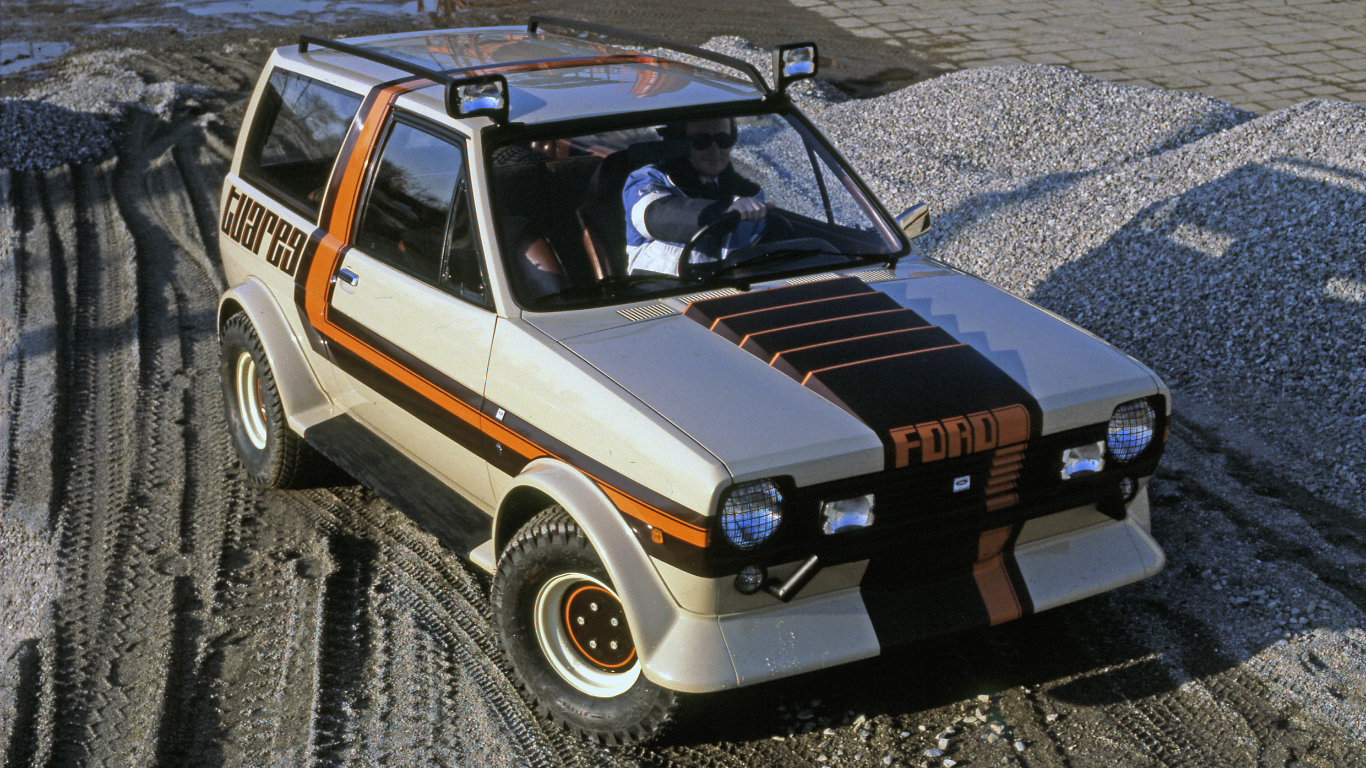
Flights of Fiesta fancy
© FordLaunched in 1976, the Ford Fiesta has been ubiquitous on British roads ever since. Sadly, production has now ended, as Ford focuses instead on an all-electric future that builds on its American roots with distinctive SUVs and crossovers.
The Fiesta itself is no stranger to a bit of ‘adventurous spirit’, though. Here, we reveal some of the Fiesta-based concept cars that never made production, from an off-road estate to a two-seat roadster.
Let’s hope Ford’s forthcoming electric era is just as innovative and exciting.
-
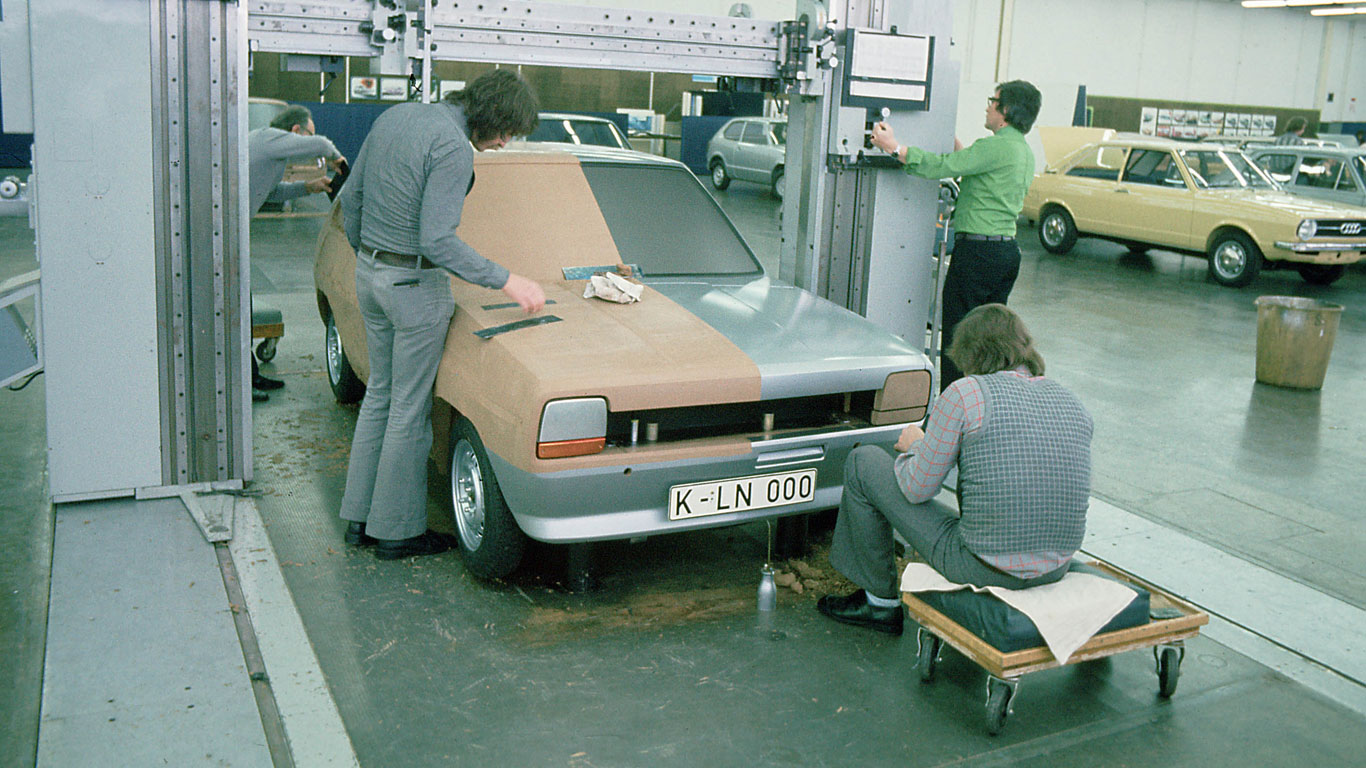
Ford Fiesta clay model
© FordIt all started with this: a clay model of the Ford Fiesta. Developed under the project name of ‘Bobcat’, the Fiesta owed much to the Ford Ghia Wolf concept car of 1972.
Once the designers had finished the production car, they could then get to work on the concept cars…
-
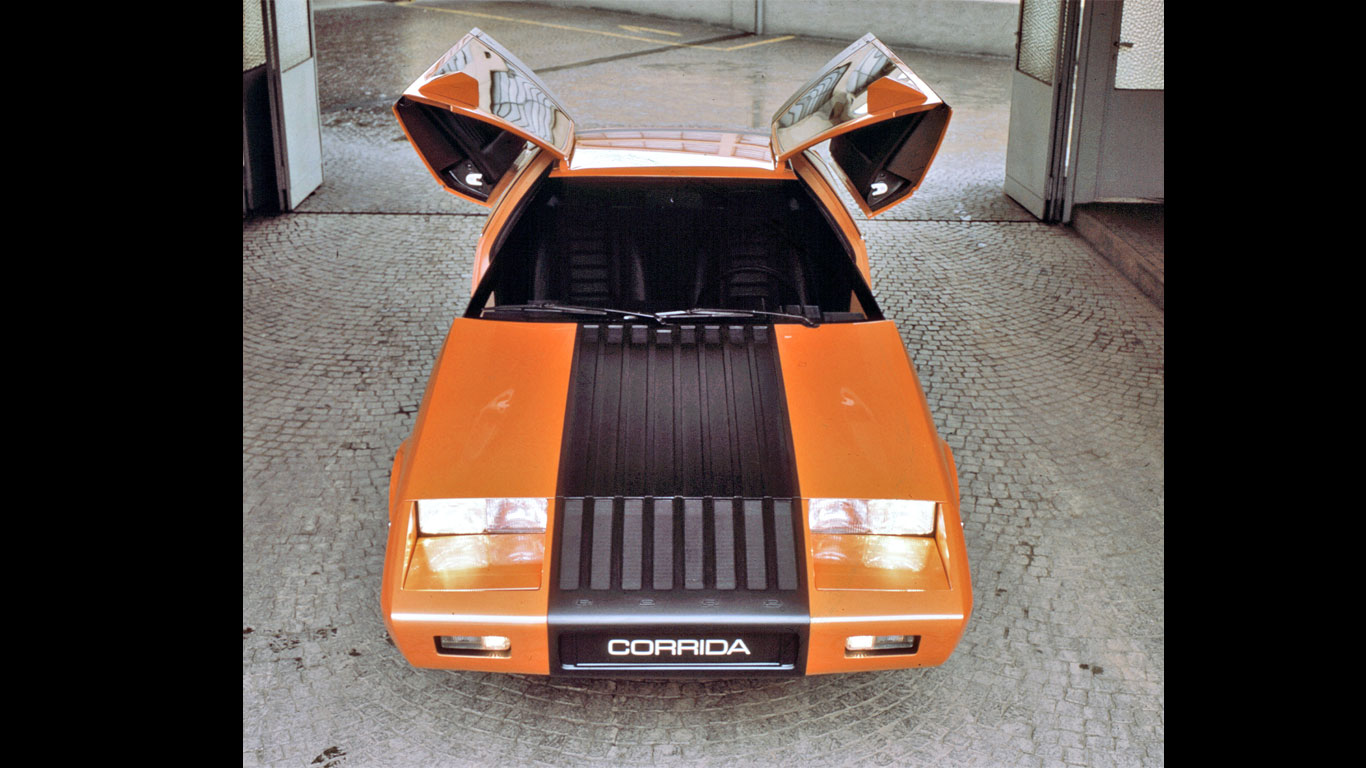
Ford Ghia Corrida
© FordIt didn’t take long for the Fiesta-based concepts to appear. The striking Ford Ghia Corrida was unveiled at the 1976 Turin Auto Show and – as a small coupe – was like a 1970s version of the original 1990s Ford Puma, also based on the Fiesta. But the production Puma wasn’t blessed with hydraulically-powered gullwing doors…
-
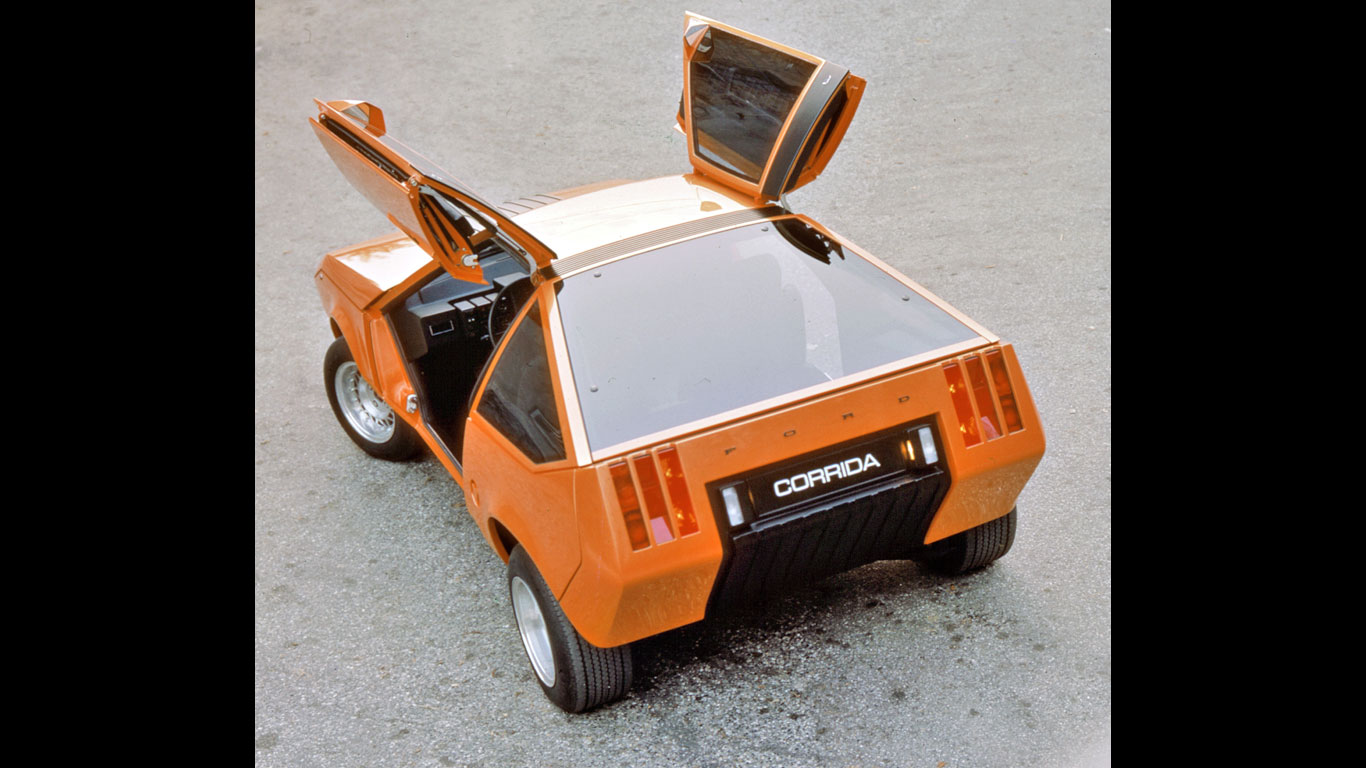
Ford Ghia Corrida
© FordThe Corrida – the name is Spanish for ‘bullfight’ – also featured headlight flaps to make the car more aerodynamic, as well as a bumper-hinged tailgate. Sadly, it never made it to showrooms, but it laid the foundations for four decades of Fiesta-based concept cars.
-
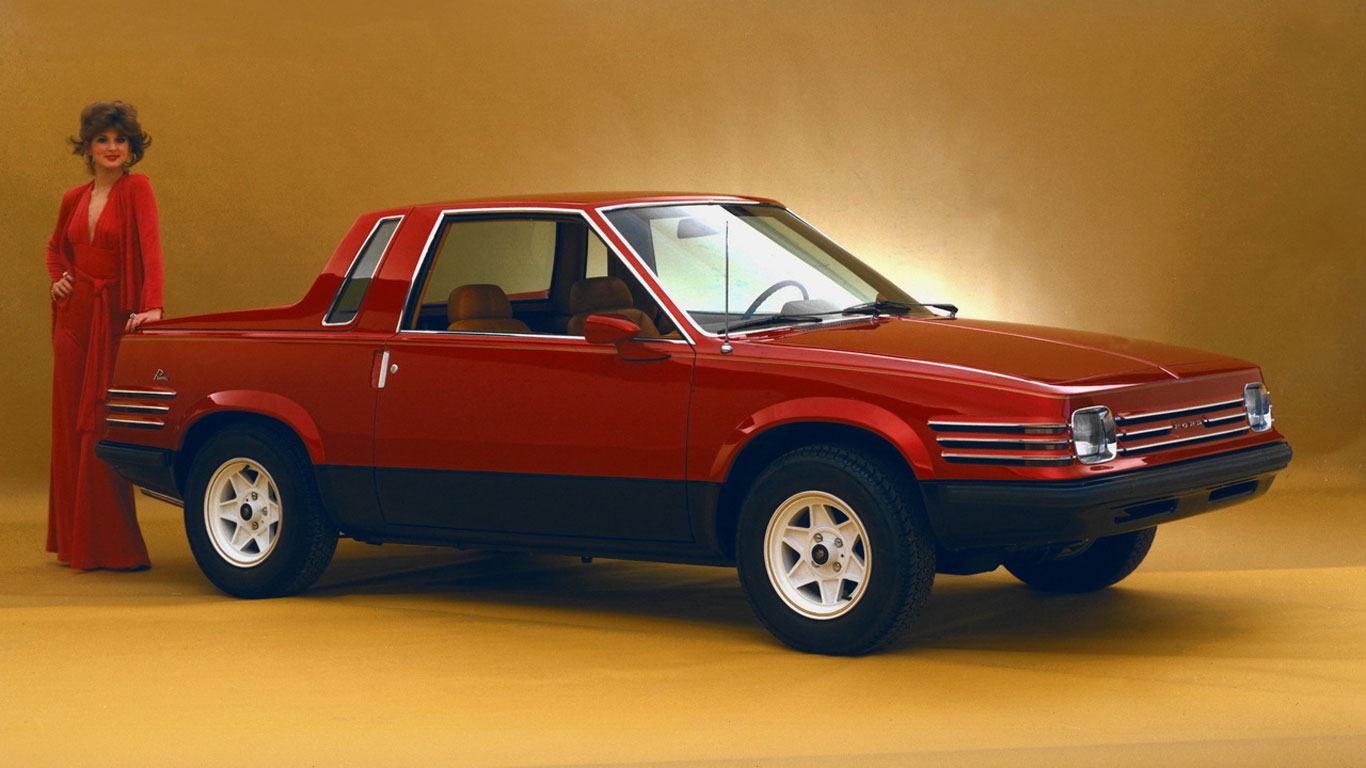
Ford Ghia Prima
© FordWhy have one car when you can have four? The Ford Prima concept of 1976 could be converted into a pick-up, coupe, estate car or two-door saloon. Ghia worked with the Ford Design Studio in Dearborn to create this oddball.
-
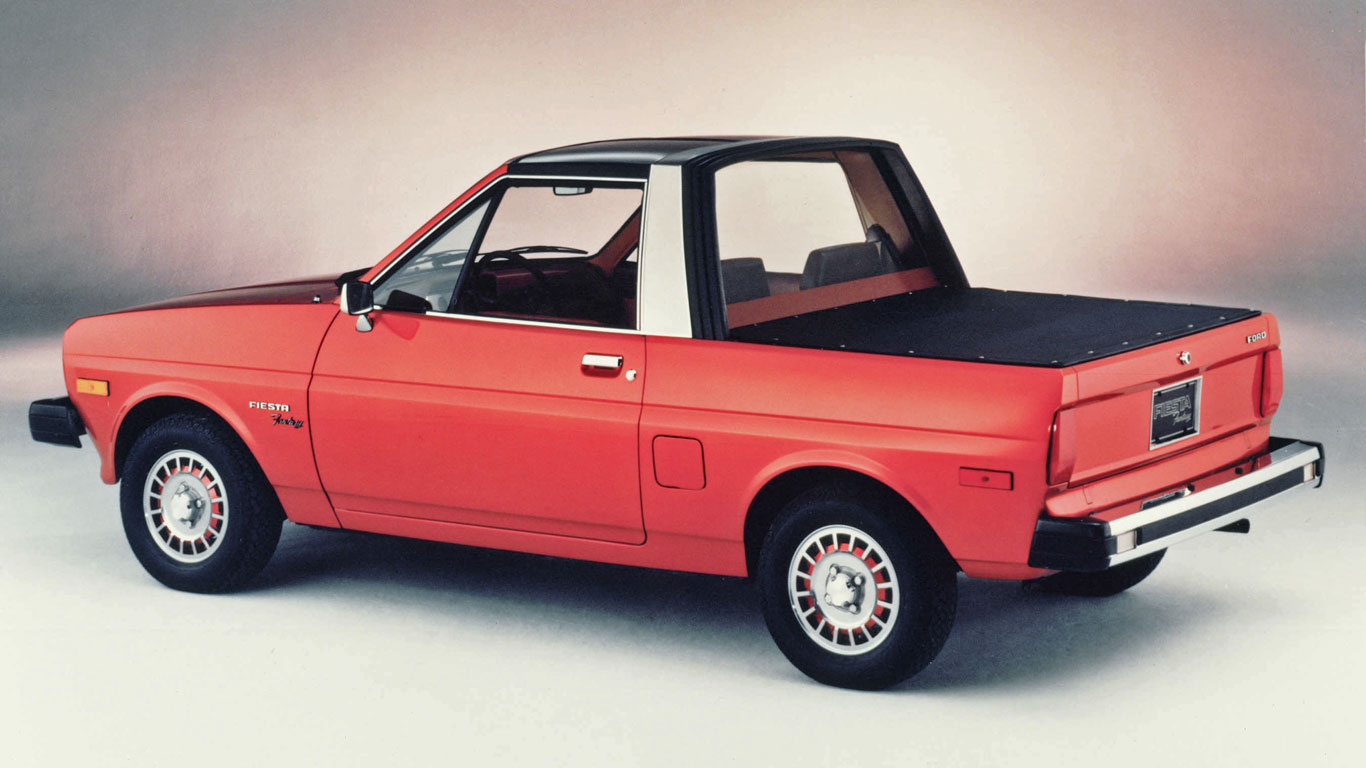
Ford Fiesta Fantasy
© Ford‘Let me be your fantasy,’ sang Baby D in 1992. We’re not sure if this was a reference to the Ford Fiesta Fantasy of 1978, although we think the breakbeat music group would appreciate its versatility. The Fantasy concept was part coupe, part pick-up and part wagon. Ford of America wanted it to improve average fuel economy across its fleet.
-
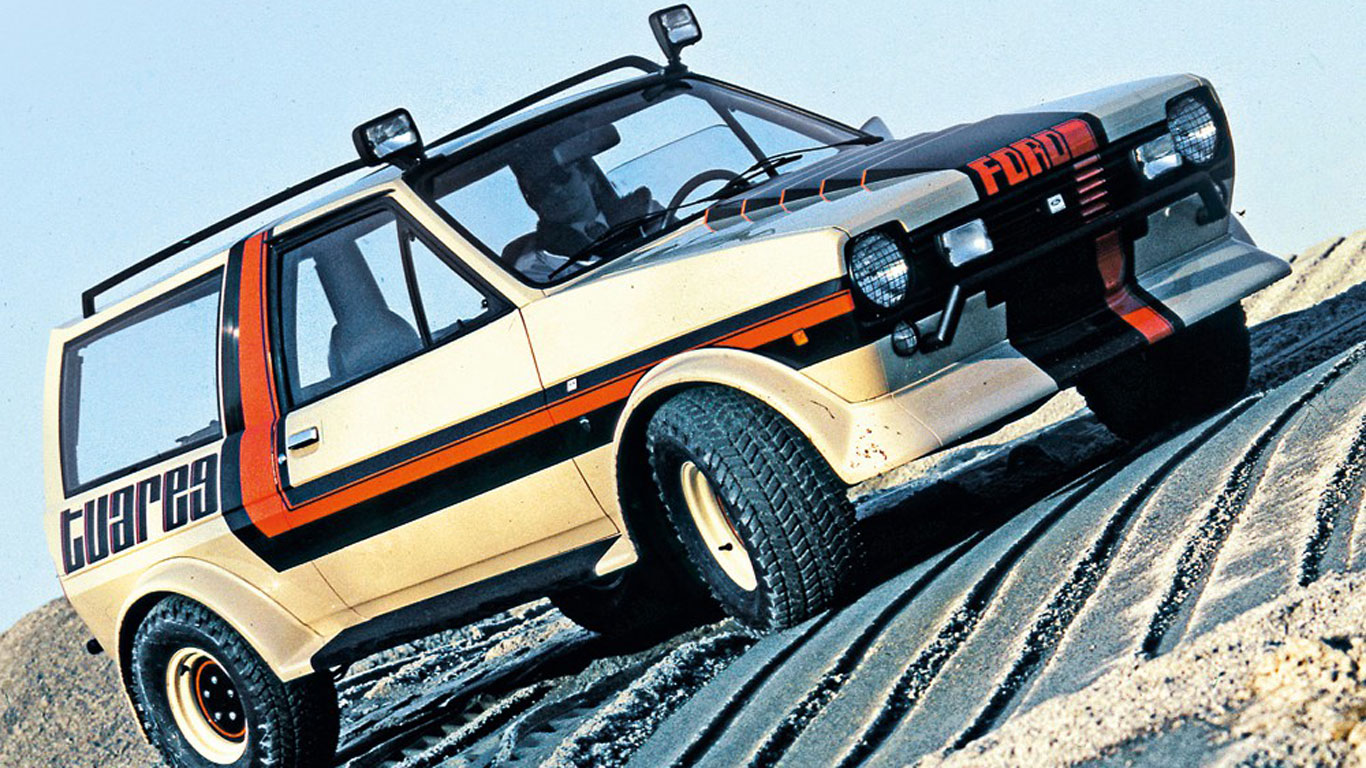
Ford Tuareg
© FordSurely the greatest Ford Fiesta never made? Not to be confused with the oversized and over-styled Volkswagen Touareg, the little Tuareg of 1979 was cool in a way the Ford Ecosport can only dream of. The floorpan was unchanged, but Ford extended the roof line at the rear to create an off-road shooting brake with more attitude than John McEnroe. Oh, Ford, why wasn’t this given the green light?
-
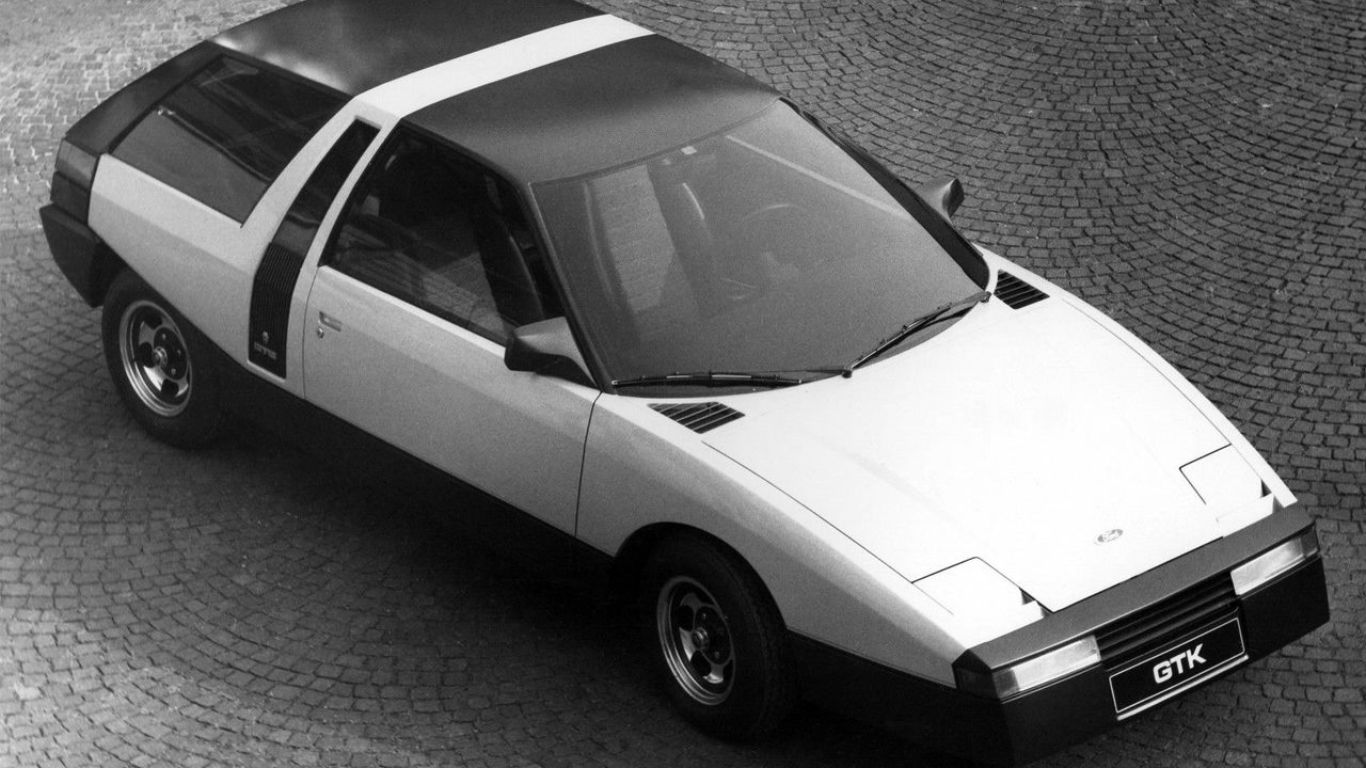
Ford Ghia GTK
© FordThe name stood for ‘Grand Touring Kombi’ and it used a stretched Fiesta platform to offer sleek styling and enough luggage space for a grand tour. Inside, the driver could enjoy a digital instrument display and on-board computer. ‘All the Ghia’ indeed…
-
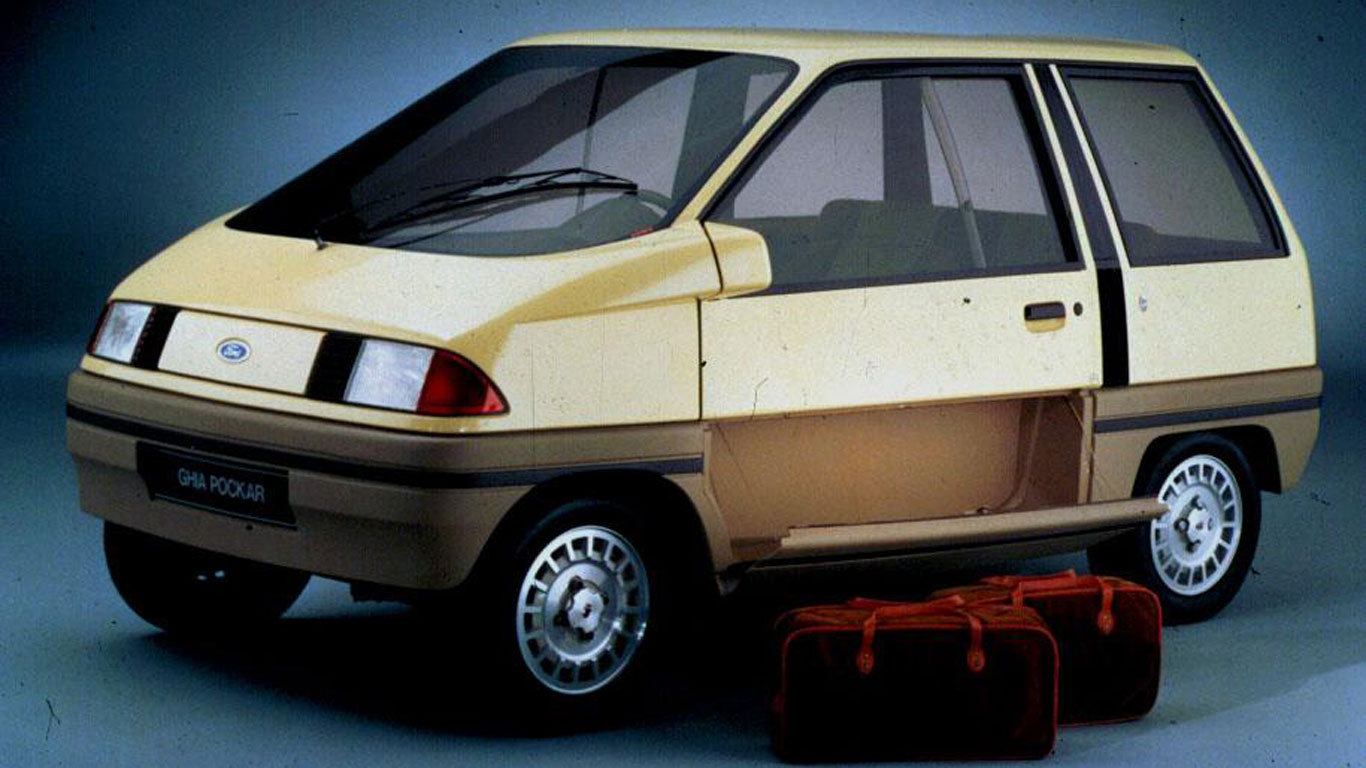
Ford Ghia Pockar
© FordMore fruits of Ghia’s labour here, with the delightful Pockar concept of 1980. The Pockar – pocket-sized car, Pock-car, geddit? – featured a pair of matching suitcases hidden away in each door. Inside, the luggage compartments doubled up as a pair of armrests. Neat.
-
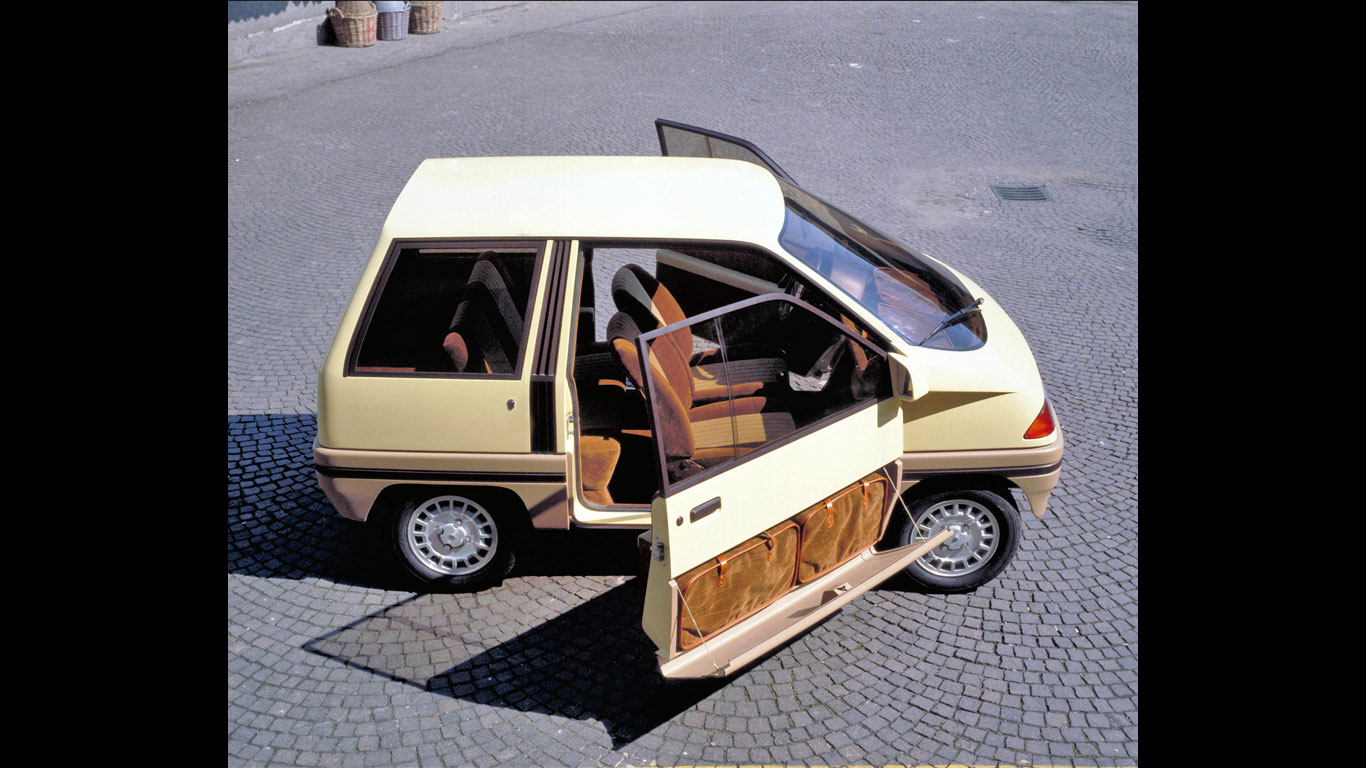
Ford Ghia Pockar
© FordMeanwhile, there’s ample space for four adults, while the rear seats could fold flat to create a small estate car. The Ford Fiesta was proving itself to be a versatile little thing.
-
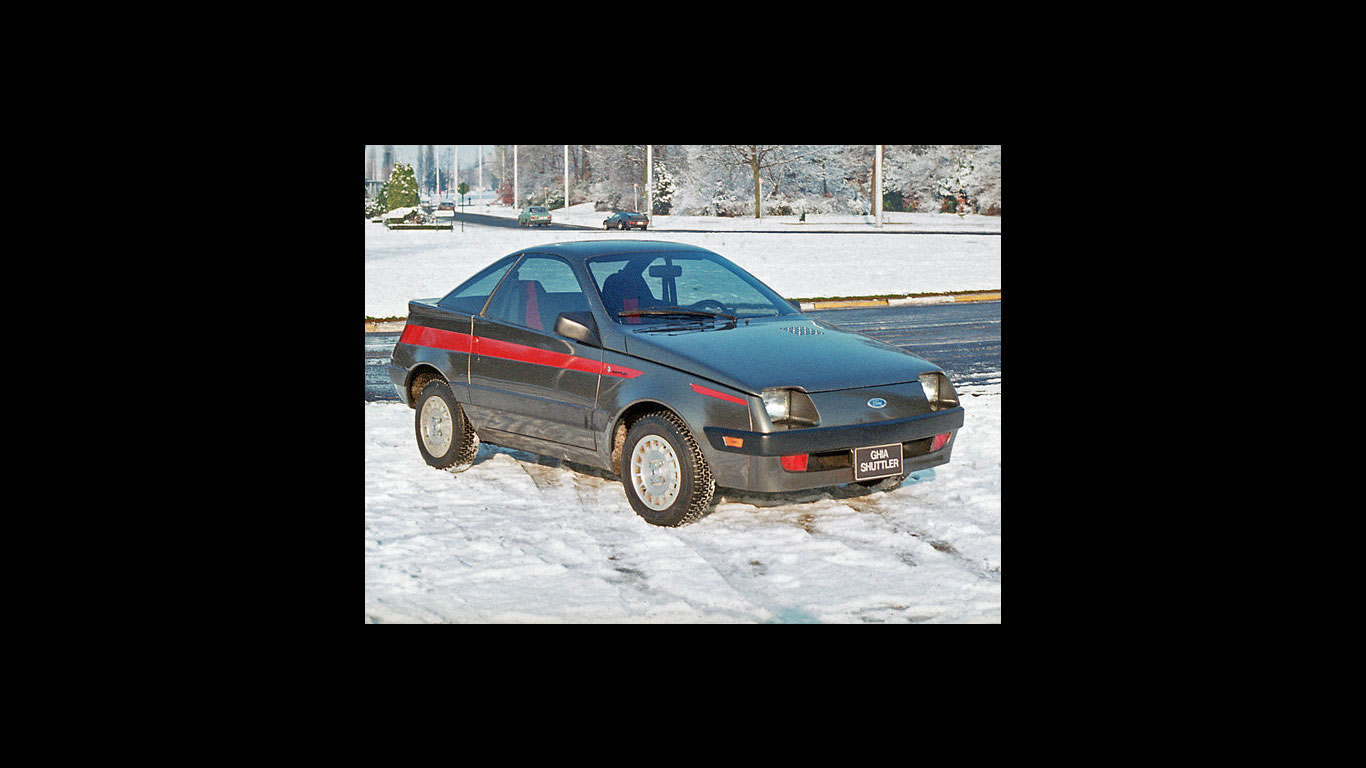
Ford Ghia Shuttler
© FordThe Ford Shuttler concept of 1981 looks like it has driven straight from the front cover of the box for an Atari video game. The red accent running the entire length of the wedge-tastic Shuttler was good for an additional 5hp. We think.
-
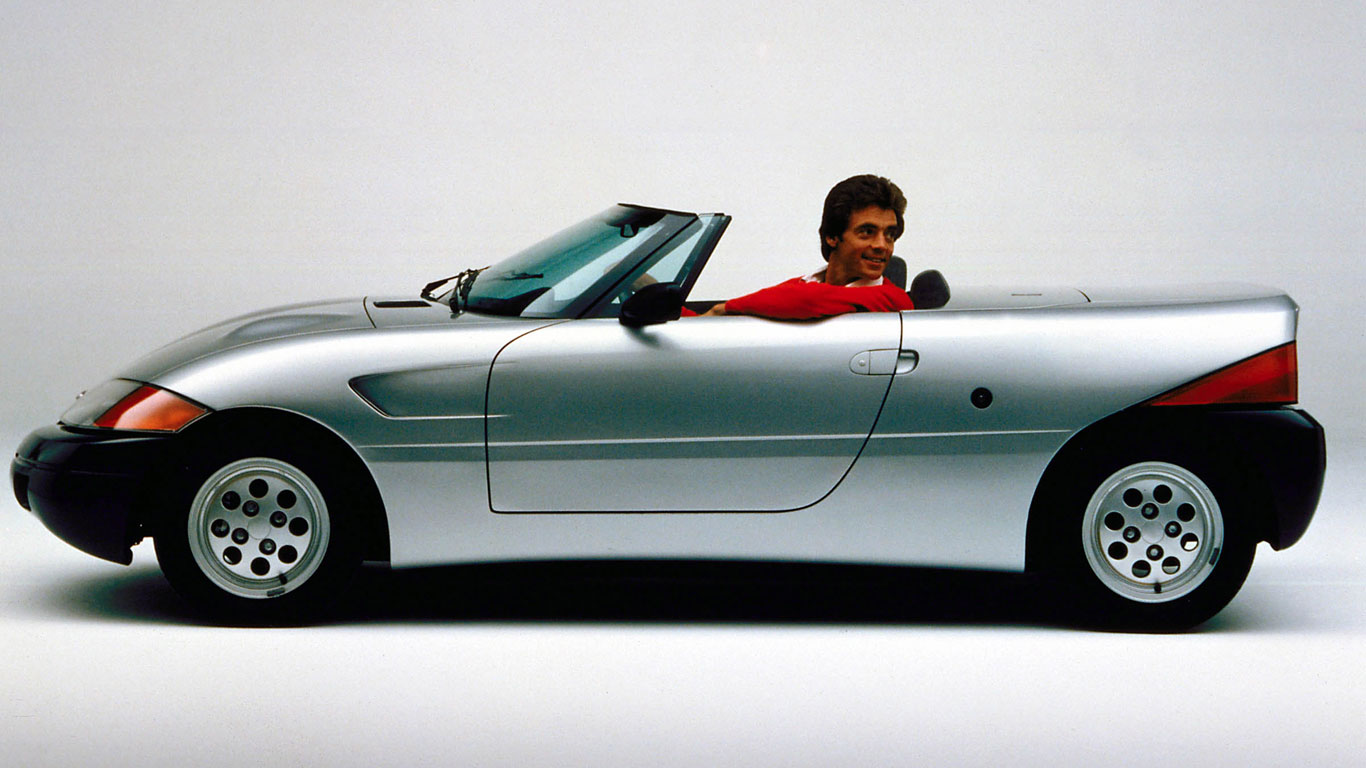
Ford Ghia Barchetta
© FordIt’s sitting on a set of ‘pepperpot’ alloy wheels, so the link to the Ford Fiesta XR2 is plain to see. Barchetta means ‘little boat’ in Italian, and was the name used by Fiat when it launched its own pint-sized roadster. The Italian Barchetta was based on the Mk1 Fiat Punto.
-
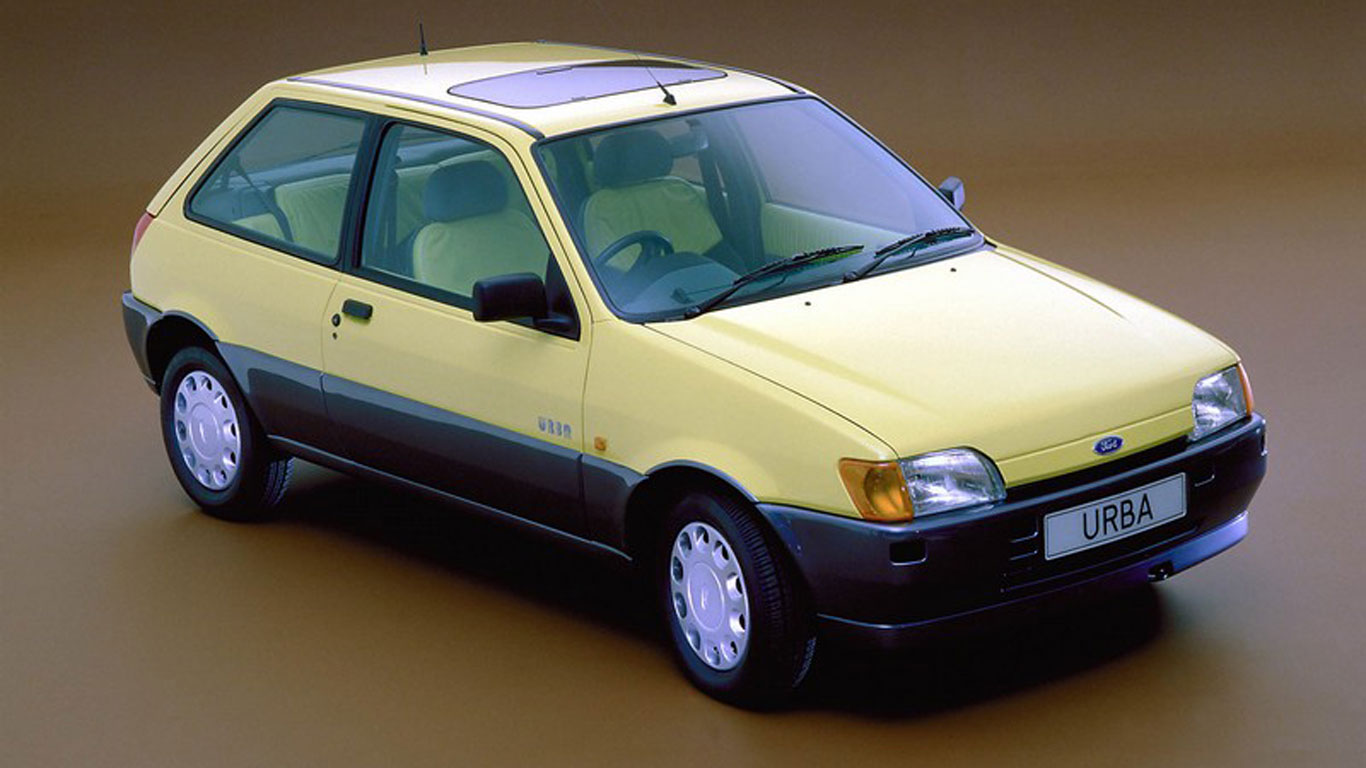
Ford Fiesta Urba
© FordWhat you can’t see from the photo is the fact that the Ford Fiesta Urba featured two doors on one side and a single door on the other. It was designed as a kind of city shopper car, featuring a fridge in the boot, built-in garage door openers and parking sensors. And yellow. Lots of yellow.
-

Ford Fiesta Urba
© FordAh, now you can see the ‘innovative’ door arrangement. Coming soon: the top 10 cars with crazy door configurations, featuring much-loved favourites like the Mini Clubman, Hyundai Veloster and Ford Fiesta Urba, accompanied by the dulcet tones of Jim Morrison.
-

Ford Fiesta Bebop
© FordIn 1990, some bosses at Ford were enjoying lunch in the park when a recently-launched Suzuki Vitara convertible drove past. Muttering something along the lines of “We’ve gotta get ourselves one of those,” they set about turning a Fiesta into a “dynamic pick-up… geared to sports-minded drivers”. At least, that’s how it played out in our heads.
-
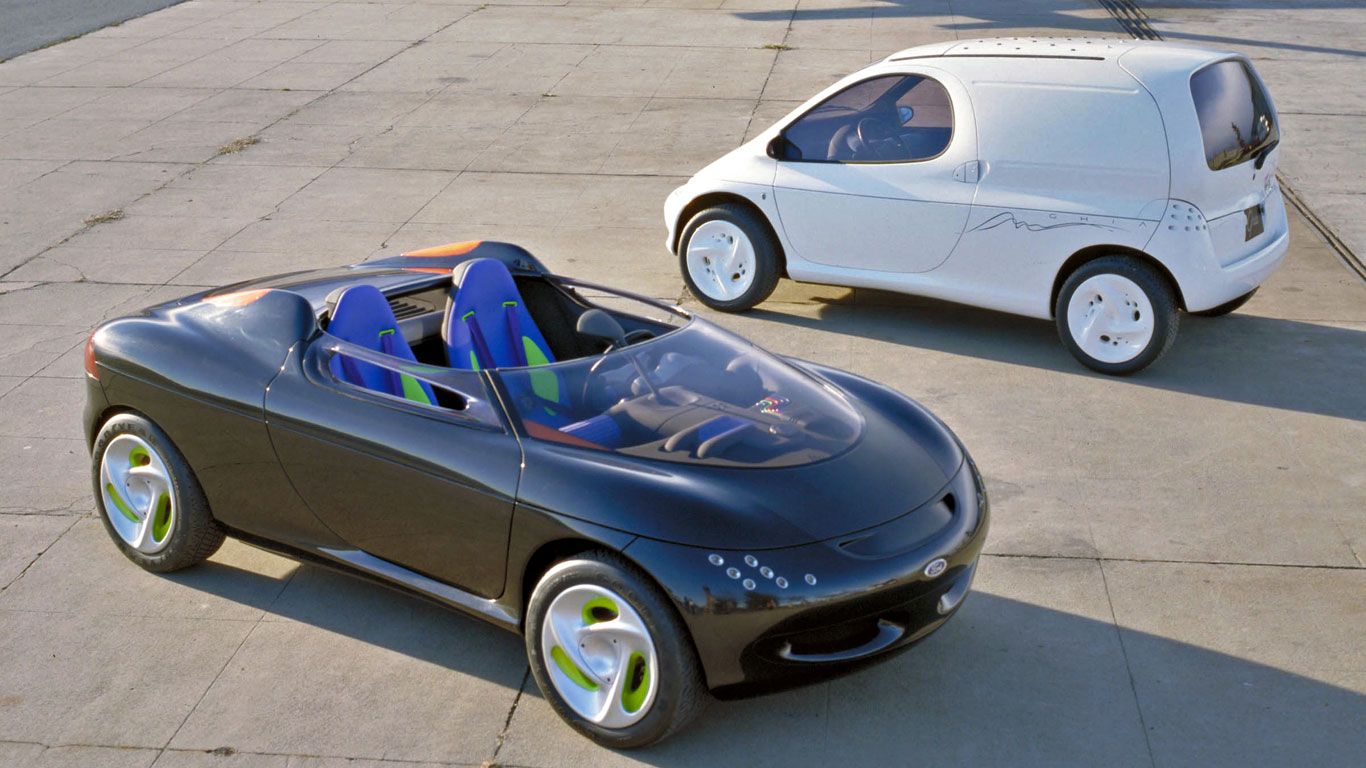
Ford Zig and Zag
© FordNot to be confused with the puppets of Big Breakfast TV show fame, the Fiesta Zig was a two-seat barchetta and the Fiesta Zag was a small van. They were designed to show the versatility of a single platform, with no strings attached.
-
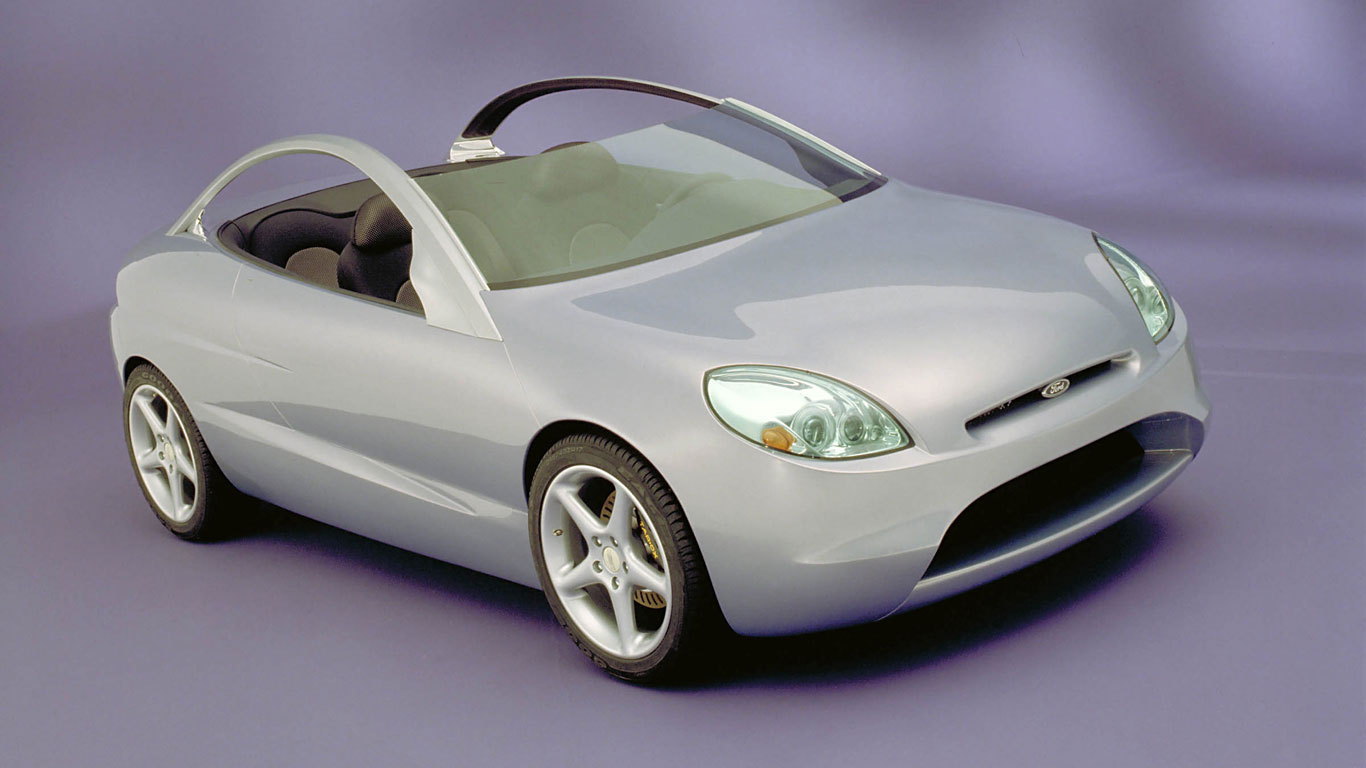
Ford Lynx
© FordThe Ford Lynx concept was built in just eight weeks – a cabriolet based on the Fiesta and unveiled at the 1996 Geneva Motor Show. Although the engine was the familiar 16-valve Zetec unit, the proposed roof used breathable Gore-Tex fabric. It doesn’t take Sherlock Holmes levels of investigative work to conclude that the Lynx was a strong influence on the Puma.
-
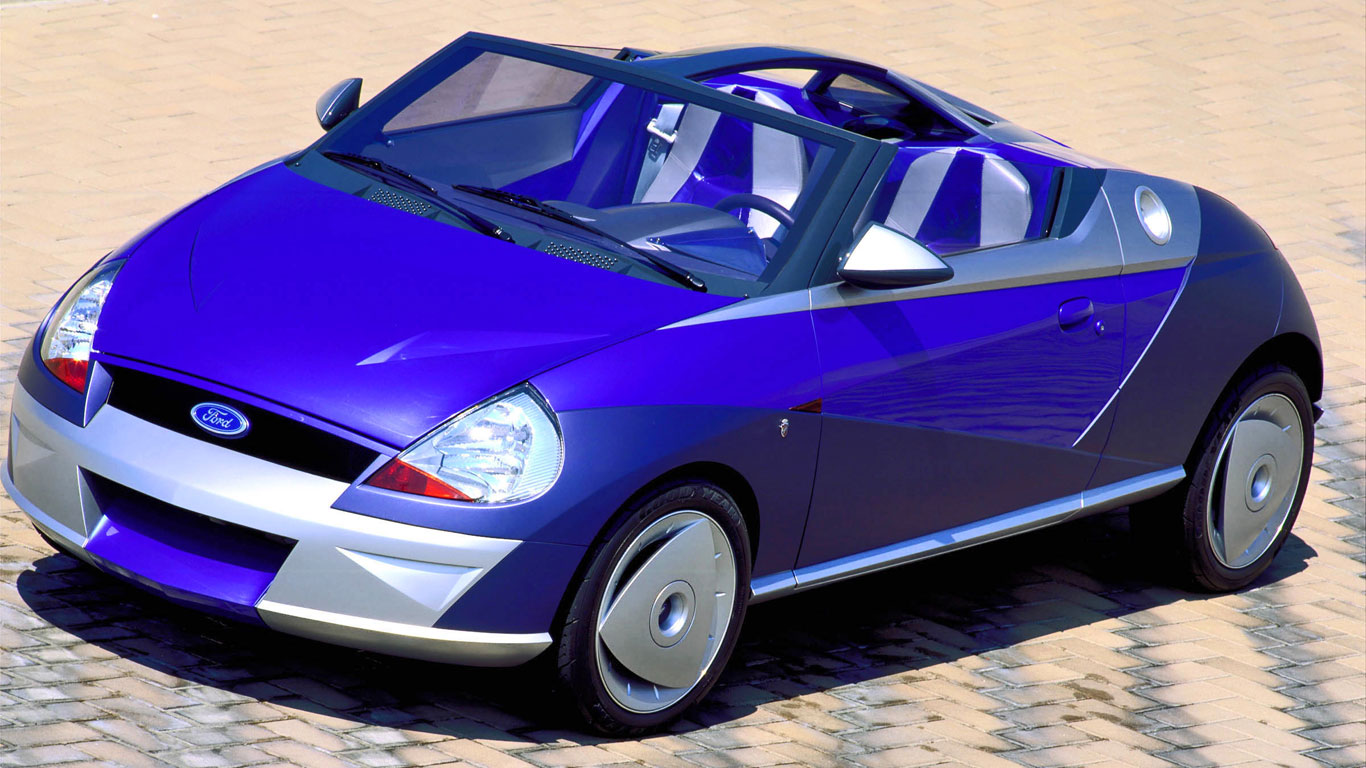
Ford Saetta
© FordIf the Ford Saetta concept of 1996 looks familiar, that’s because it became the Ford Streetka. For sure, the production version was far less dramatic, but the influence is clear to see.
-
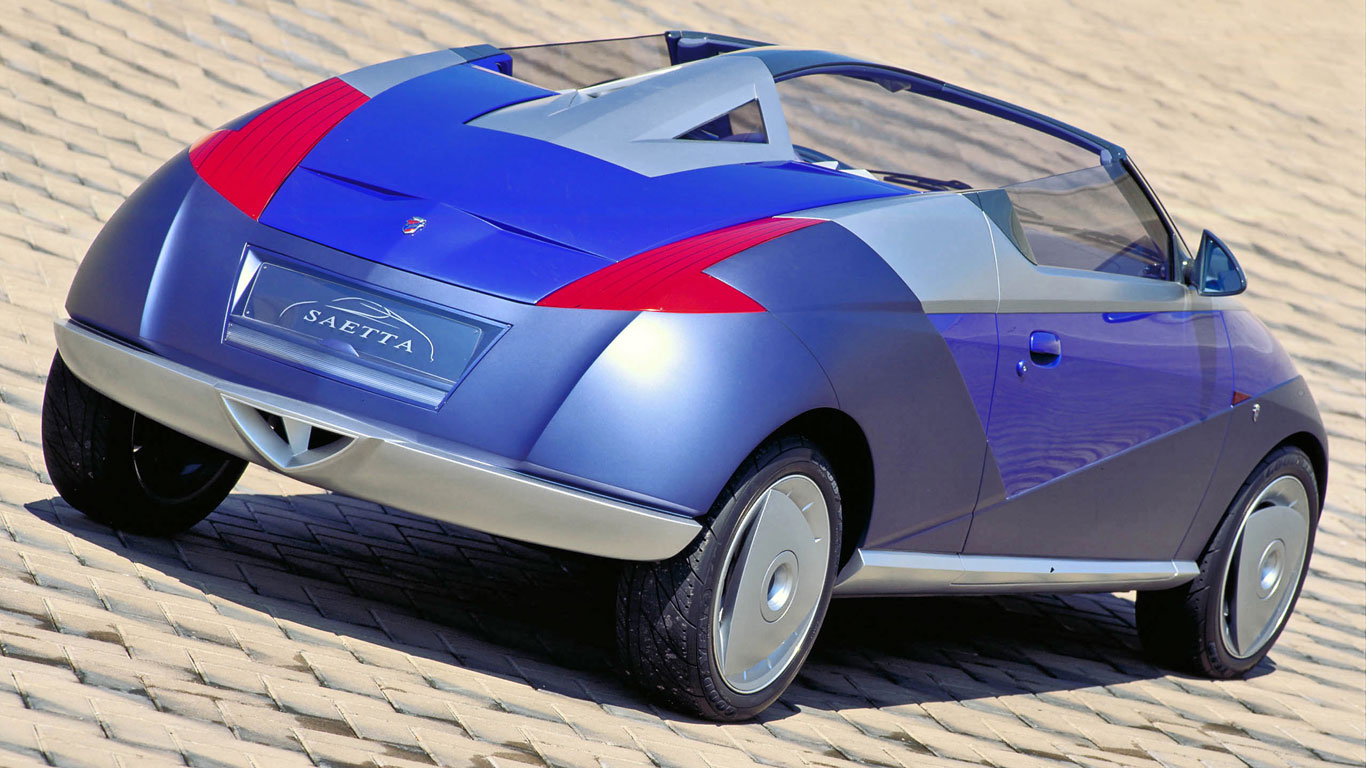
Ford Saetta
© FordHighlights included a central arch connecting the windscreen with the rear end, plus detachable panels that formed the roof. Once again, Ford has Ghia to thank for this conceptual gem.
-
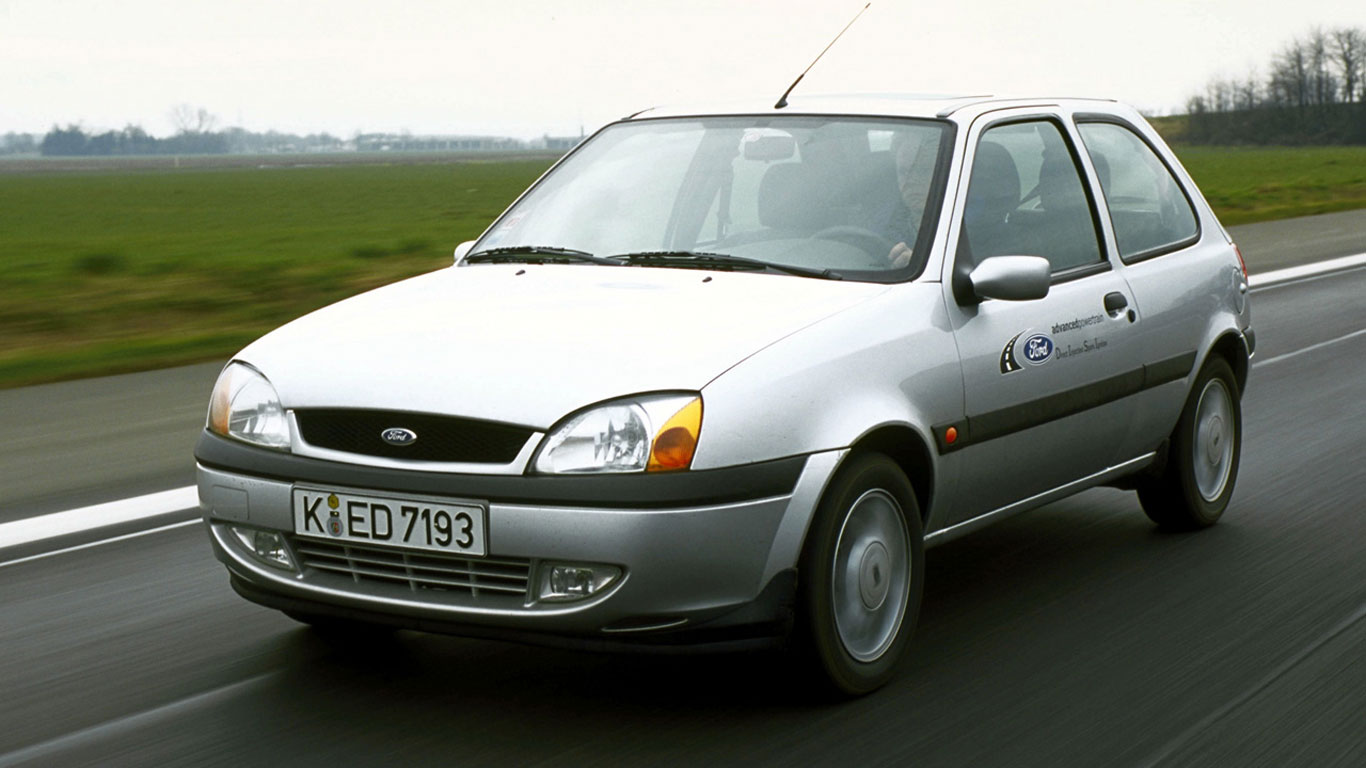
Ford Zetec S3 DISI
© Ford‘DISI’ stands for Direct Injection Spark Ignition – a new powertrain trialled by Ford. In short, it was a three-cylinder turbocharged 1.0-litre petrol engine with 110hp, but 15-30 percent more efficient than a 1.8-litre engine. It was too expensive to make production, but it paved the way for the modern 1.0 EcoBoost engine.
-
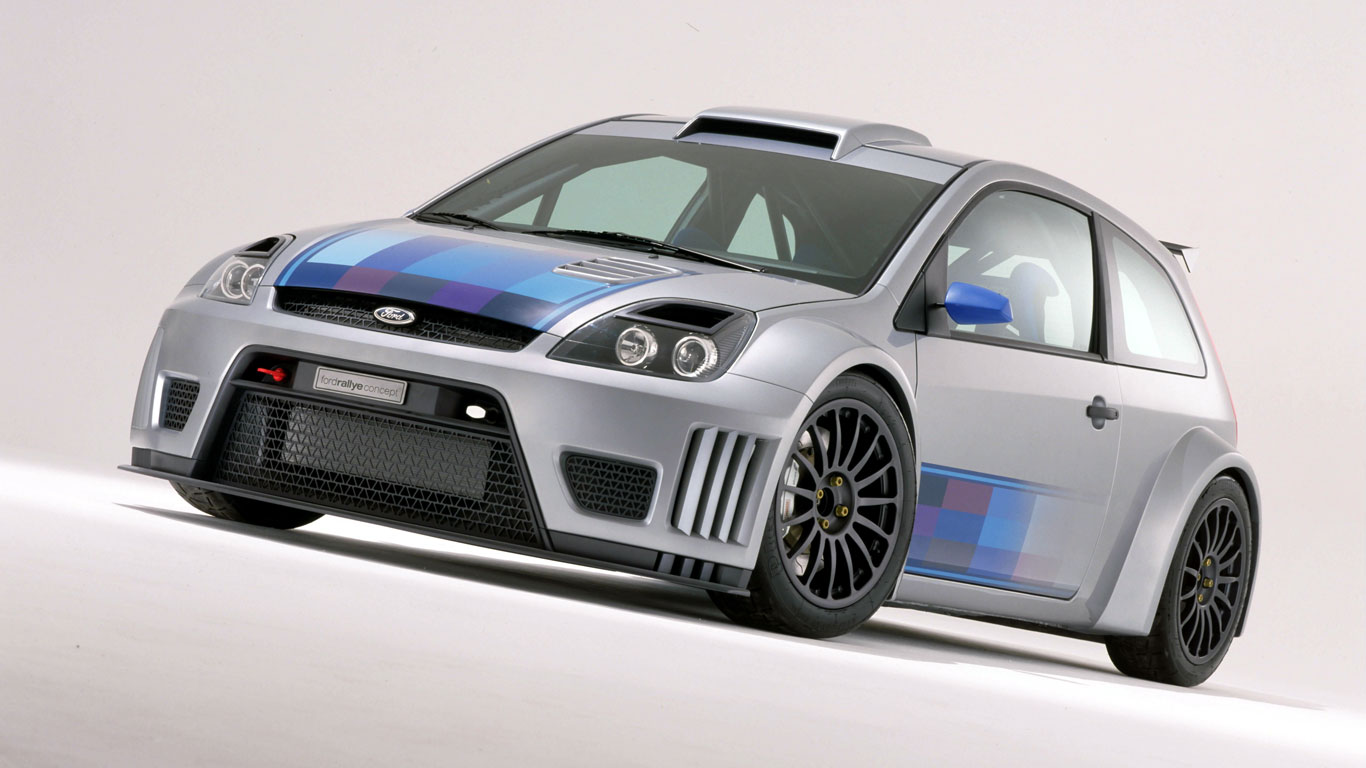
Ford Rallye Concept
© FordThe genesis for the Ford Fiesta rally car: the Rallye Concept of 2002 looked like it had driven straight out of a PlayStation game. It’s good, but it’s not our favourite Fiesta concept of the new millennium…
-
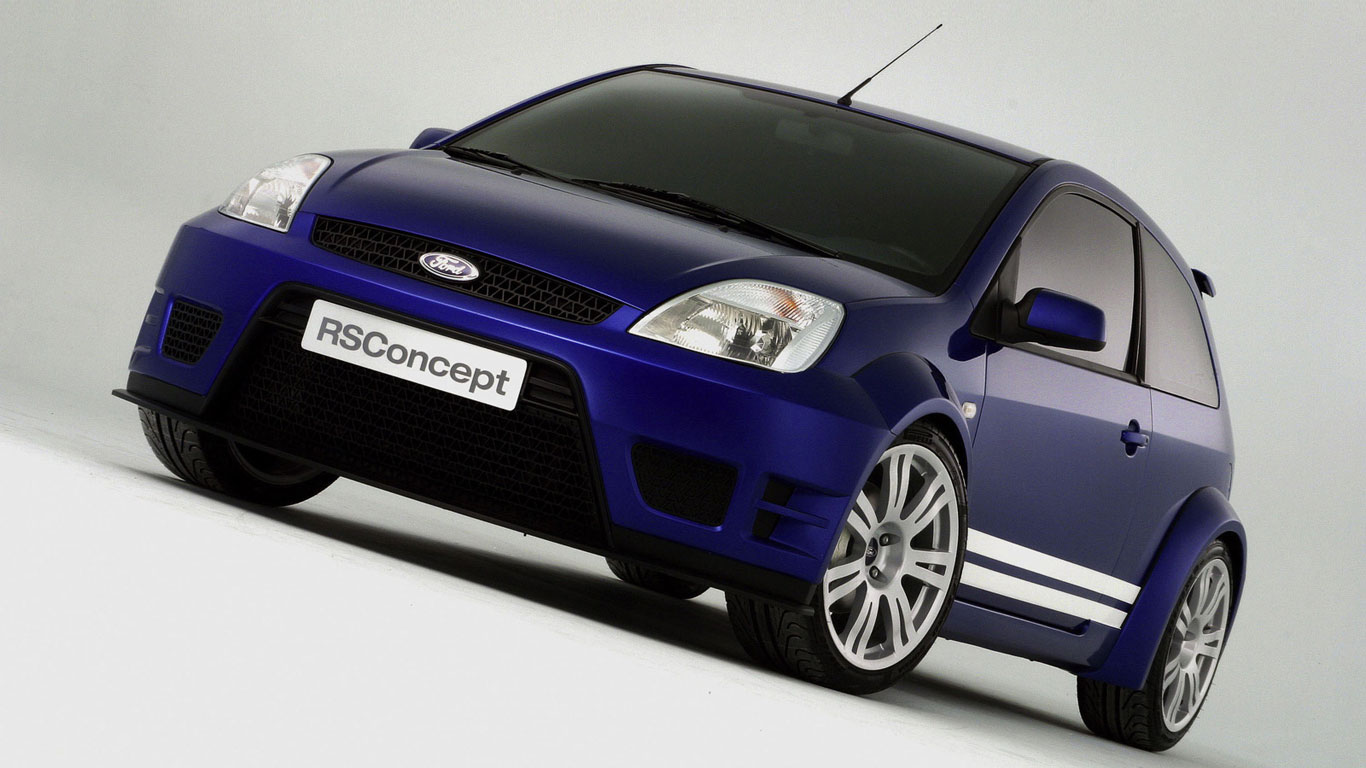
Ford Fiesta RS Concept
© FordBecause that honour belongs to the Ford Fiesta RS Concept of 2004. Inspired by the Rallye Concept, it featured huge arches, massive rims and twin racing stripes – just three essential components required for any self-respecting RS car.
-
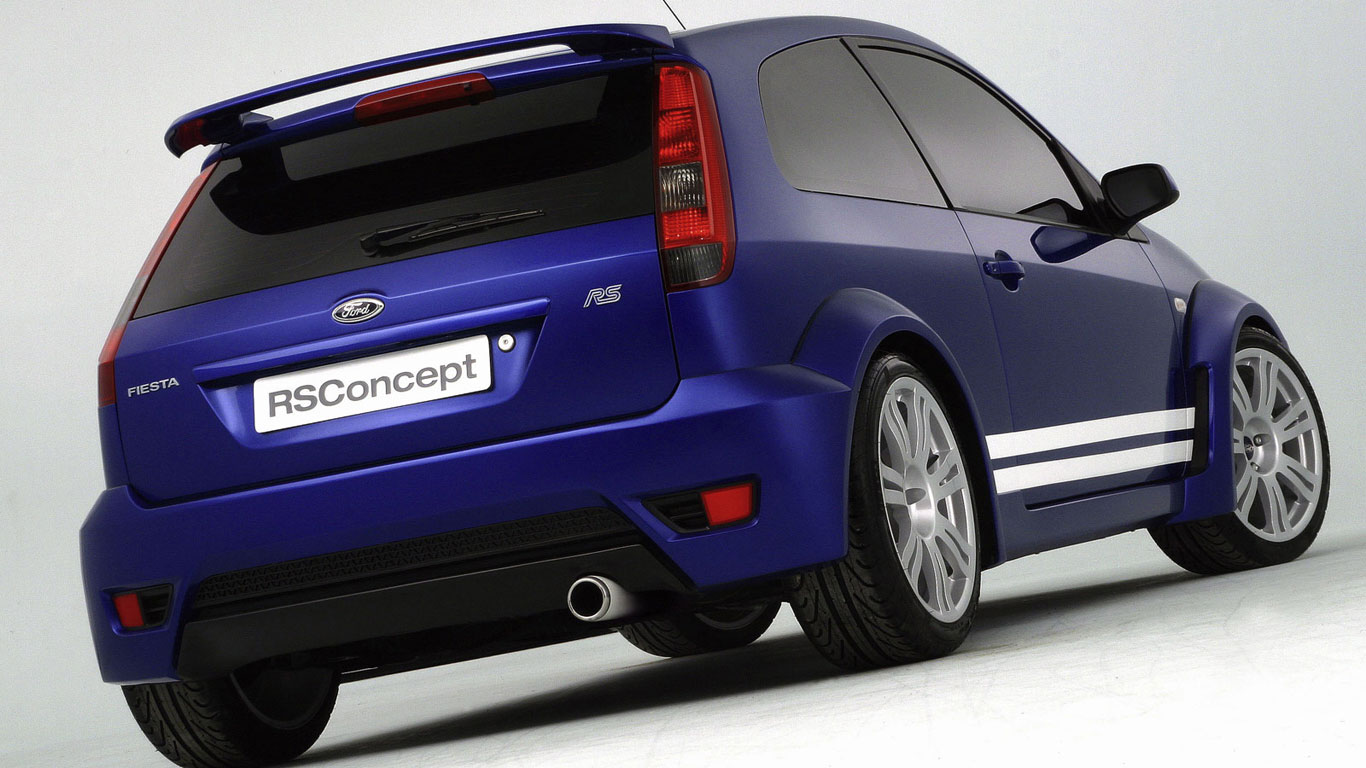
Ford Fiesta RS Concept
© FordIt looked production-ready, right down to the showroom-winning interior, which meant we all got rather excited about the prospect of a Fiesta RS. Sadly, it never made it to production, quite simply because Ford’s calculator kept saying ‘no’. Seventeen years on, we still mourn this missed opportunity.
-

Ford Verve
© FordFord claims the inspiration ‘came in part from mobile phone design’. Which means the Fiesta Verve of 2007 will often run out of juice just when you need it and be rendered useless if you get it wet. On the plus side, there was no headphone jack, just like the latest iPhones, so it was quite the pioneer.
-
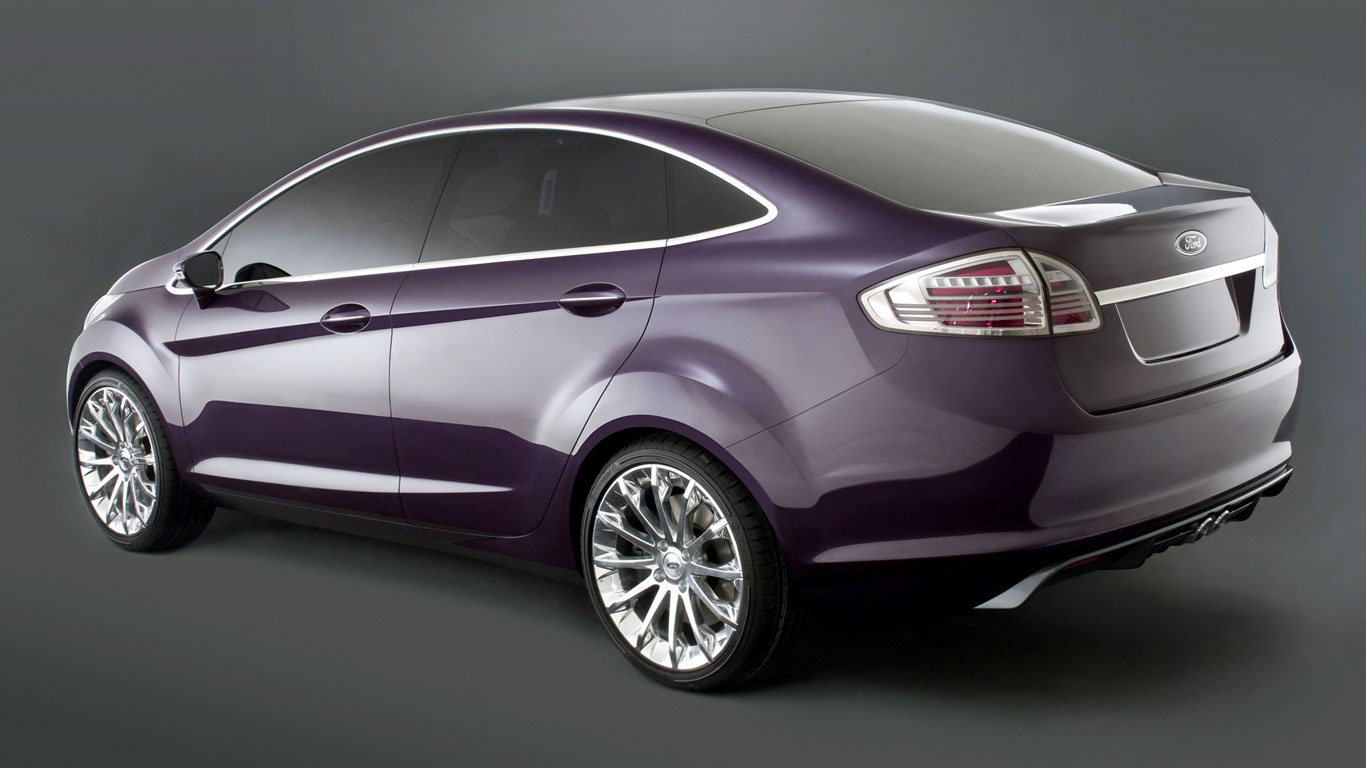
Ford Verve saloon
© FordFord also created an ugly compact saloon version. To borrow a line from Richard Ashcroft, the Verve saloon was bitter, the Verve hatch was sweet. In both cases, they previewed the forthcoming Fiesta.
-
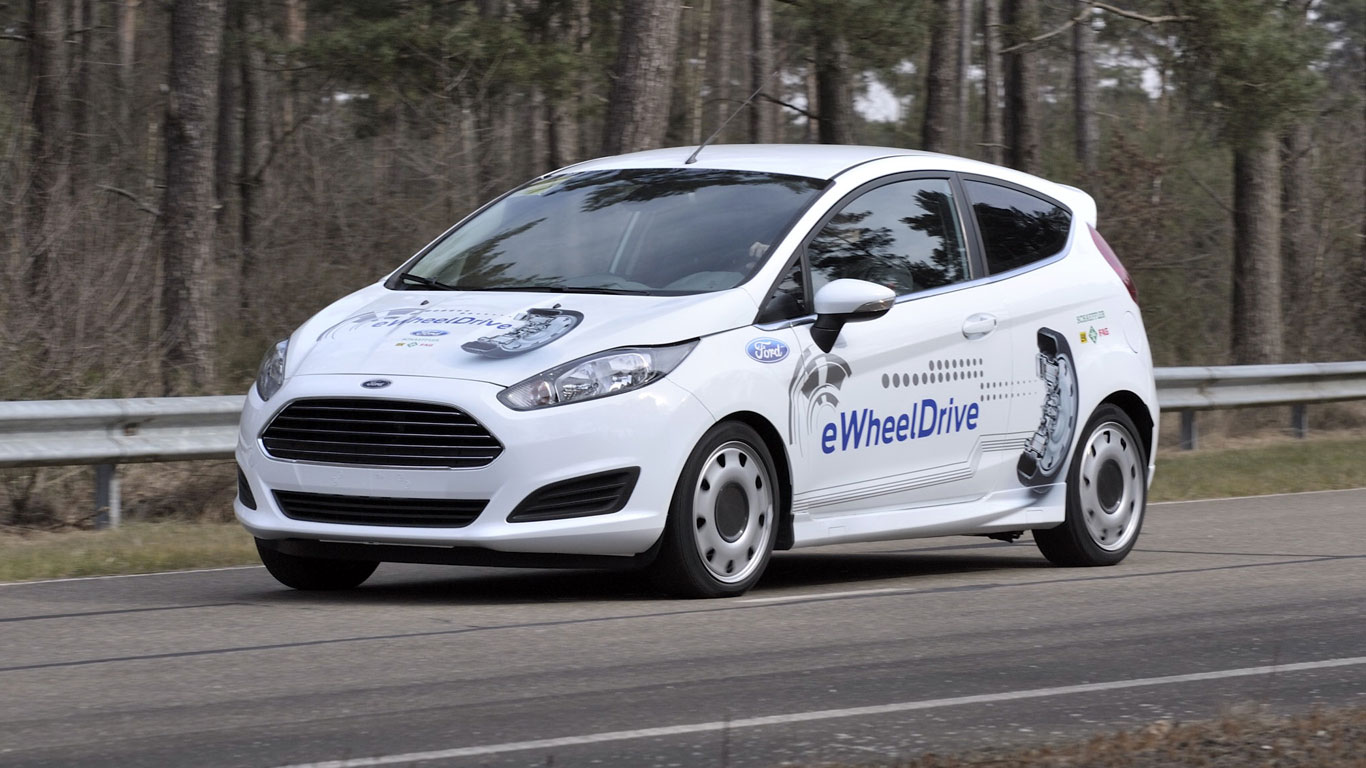
Ford Fiesta eWheeldrive
© FordThis is the Ford Fiesta eWheeldrive of 2013. Powered by independent electric motors in each of the rear wheels, the eWheeldrive offers more space than a conventional petrol or electric vehicle. Ford claims it could even move sideways into parking spaces.
-
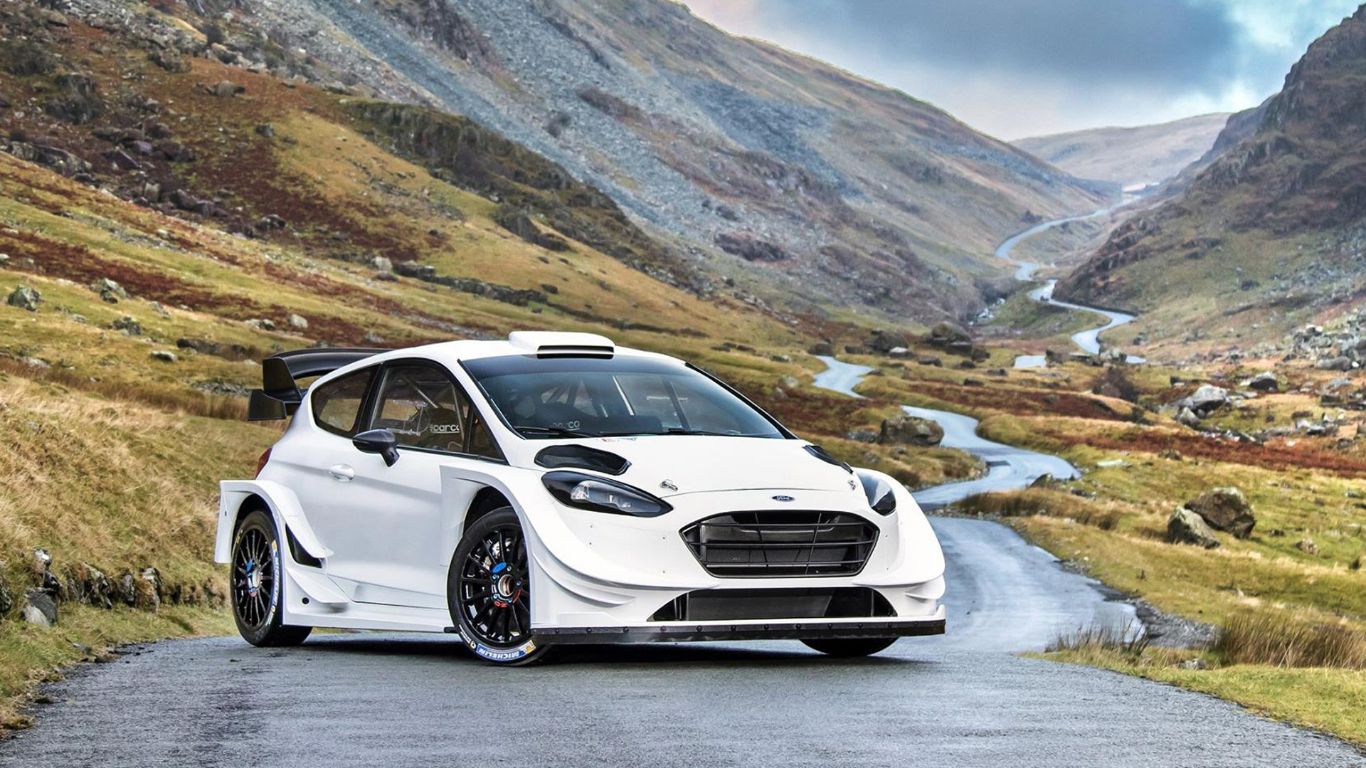
Ford Fiesta WRC
© FordWe conclude with the Fiesta WRC. Not strictly a concept, this wide-arched 380hp rocket previewed the World Rally Championship car, built by M-Sport in Cumbria. The Fiesta WRC won the championship in its very first season, including rally wins for Sébastien Ogier, Ott Tänak and Elfyn Evans.